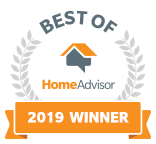Unveiling the Secrets to Mold-Free Living
Mold, the silent intruder, is a menace that can wreak havoc on our homes and health. With years of hands-on experience in mold removal, I'm here to shed light on the often-misunderstood world of effective mold remediation. In this guide, we'll delve into the intricacies of tackling mold infestations head-on, highlighting the truths that every homeowner should know.
1. The Complex Nature of Mold Infestations: Going Beyond the Surface
Mold is a master of disguise, often lurking where we least expect it. One memorable case involved a seemingly minor bathroom leak that led to extensive mold growth behind the walls. This serves as a reminder that mold doesn't limit itself to visible areas; it can penetrate deep within structures, making detection a challenge. To address mold effectively, we must recognize that its reach extends beyond what meets the eye.
2. The Myths of DIY Mold Removal: A Reality Check
DIY solutions are tempting, but they can do more harm than good when it comes to mold removal. I recall a situation where a well-intentioned homeowner attempted to tackle mold with bleach, inadvertently spreading spores and exacerbating the issue. It's essential to understand that mold removal is not just about cleaning visible spots; it requires expertise to locate hidden infestations and prevent cross-contamination.
3. Understanding Mold's Reproductive System: The Spore Factor
Mold's ability to reproduce through spores contributes to its resilience. These tiny particles can become airborne and settle in new areas, leading to new infestations. As a professional, I've witnessed the power of specialized equipment, such as HEPA-filtered vacuums and negative air pressure systems, in containing and removing these spores. Effectively managing mold means addressing its reproductive strategy head-on.
4. The Core Principles of Effective Mold Remediation: A Step-by-Step Guide
Assessment: Peeling Back the Layers
The assessment phase is like detective work; it involves uncovering the full extent of mold growth and identifying moisture sources. Utilizing tools like moisture meters and infrared technology, we can pinpoint hidden problem areas. In one case, a thorough assessment revealed an attic leak that had gone unnoticed, causing widespread mold growth.
Containment: Trapping the Intruders
Creating a controlled workspace is vital to prevent spores from migrating during removal. One instance that stands out is when we set up containment in a family's living room to remove mold from a hidden crawl space. Containment involves sealing off the area with plastic sheeting and utilizing negative air pressure systems to ensure that no spore escapes.
Removal: Eradicating Mold at Its Source
Effective removal involves safely eliminating mold-infested materials. Personal protective equipment is a must to avoid exposure. Once, while removing mold-infested drywall, I realized the importance of controlled removal to minimize the release of spores. This step is critical for preventing further contamination during the process.
Cleaning: Wiping the Slate Clean
Thorough cleaning is essential after removal to eliminate any lingering spores. This phase includes using HEPA vacuums and specialized cleaning solutions. I've seen firsthand how meticulous cleaning can restore a space to its pre-mold state. It's like giving your home a fresh start after a long battle.
Prevention: Sealing the Deal
Preventing future mold growth is key. Fixing moisture issues and maintaining proper ventilation are fundamental. One family had struggled with recurring mold until we identified a leaky foundation as the root cause. Fixing the leak sealed the deal and prevented further infestations.
Verification: Ensuring Success
The verification step involves post-remediation testing to confirm the success of the process. This independent validation provides peace of mind for both homeowners and professionals. I vividly remember a relieved homeowner who had battled mold for years; post-remediation testing finally confirmed a mold-free home.
5. The Human Element: Importance of Professional Expertise
Professional expertise plays a pivotal role in mold remediation. I recall a case where a homeowner attempted to handle a severe mold problem independently, only to worsen the situation. Engaging professionals ensures a comprehensive approach that addresses every aspect of the infestation, leaving no room for mistakes.
6. Environmental Impact: Responsible Disposal and Ethical Considerations
Mold removal isn't just about our homes; it's about the environment too. Responsible disposal of mold-infested materials minimizes environmental impact. Additionally, ethical considerations include protecting both occupants and the environment from the potentially harmful effects of mold and its removal.
7. Long-Term Solutions: Sustaining Mold-Free Environments
A mold-free environment requires ongoing care. Regular inspections, proper ventilation, and prompt response to water damage are essential. I've seen families maintain mold-free living spaces by implementing these practices, ensuring a healthy home for years to come.
Conclusion: Unmasking the Path to Mold-Free Living
Congratulations! You've unveiled the truths behind effective mold remediation. Armed with this knowledge, you're better equipped to navigate the challenges posed by mold infestations. Remember, successful mold removal goes beyond superficial cleaning; it requires a comprehensive approach driven by professional expertise. By embracing these truths, you're not only safeguarding your home but also prioritizing the health and well-being of your loved ones. So, if mold knocks on your door, you now know the path to a mold-free future.



